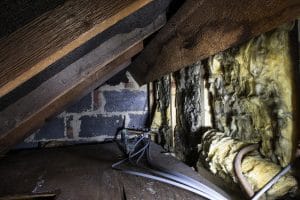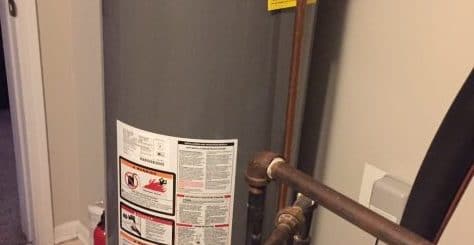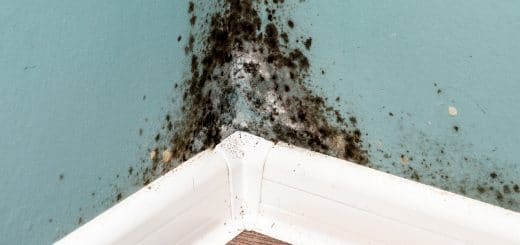How Dangerous Can Crawl Space Mold Be?
First off, an understanding of the crawl space is essential to know just how devastating moldMold is a type of fungus that grows in damp or humid conditi... More in this region can be. The crawl space is that shallow area that is located just under the home and was constructed in order to create a foundation between the bottom of the home and the ground.
In some ways, the crawl space may be a lot more advantageous than the regular basement. It may also have other functions such as preventing termite infestations in areas that are prone to that.
Also, it may be a lot easier to access pipes, plumbing, electrical and HVAC systems in a crawl space. Given that those are some great perks, we are still left with a major yet pretty avoidable problem which is the growth of moldMold is a type of fungus that grows in damp or humid conditi... More in the crawl space.
Why Should You be Concerned About Crawlspace Mold?

MoldMold is a type of fungus that grows in damp or humid conditi... More can result in a negative impact on your health
One of the easiest places for mold to grow is in your crawl space since it doesn’t necessarily require sunlight to grow. In fact, the major factor that moldMold is a type of fungus that grows in damp or humid conditi... More needs for growth is moisture.
MoldMold is a type of fungus that grows in damp or humid conditi... More can result in a negative impact on your health and continued exposure to crawl space moldMold is a type of fungus that grows in damp or humid conditi... More can leadLead is a heavy metal that can be toxic to humans, especiall... More to a range of health issues. These problems may include eye irritation, coughing, wheezing, nasal stuffiness, throat irritation, eye irritation or even skin irritation.
Furthermore, some more serious ailments like obstructive lung disease have been linked to prolonged exposure to moldMold is a type of fungus that grows in damp or humid conditi... More and damp places in general. And what makes this type of moldMold is a type of fungus that grows in damp or humid conditi... More a lot more dangerous is the fact that you don’t have to go into your basement to be exposed.
Thanks to the Stack effect, the air from your crawl space finds its way into your house and circulates. Since heat rises, warmer air rises which then brings along with it various particles. Some of these particles are crawl space moldMold is a type of fungus that grows in damp or humid conditi... More.
Institute of Medicine publications in 2007, 2010, and 2011 reiterated evidence that linked association with damp spaces and indoor moldMold is a type of fungus that grows in damp or humid conditi... More to respiratory illnesses. Therefore, spending time in a place with moldMold is a type of fungus that grows in damp or humid conditi... More present such as your crawl space is a potential cause of ill health.
What makes this type of moldMold is a type of fungus that grows in damp or humid conditi... More more dangerous is the fact that it is easy to overlook given that it isn’t in a very obvious place. Also, it is one of the most susceptible areas of the house to moldMold is a type of fungus that grows in damp or humid conditi... More growth. This implies that in almost every crawl space, there is moldMold is a type of fungus that grows in damp or humid conditi... More, but you wouldn’t notice because you almost never have any business there.
Why is Your Crawl Space so Prone to Mold?
First off, moldMold is a type of fungus that grows in damp or humid conditi... More flourishes in places that are dark and moist as compared to places exposed to sunlight. The sporesSpores are microscopic reproductive units of fungi or mold t... More easily enter through any open vents and provided it has enough organic materialsOrganic materials are derived from living organisms, such as... More to feed on, it is good to go. However, moisture is one key factor in moldMold is a type of fungus that grows in damp or humid conditi... More growing so how exactly does moisture get into your crawl space?
1. Penetrating Damp
Different types of crawl spaces including closed or encapsulated crawl spaces can be susceptible to penetrating damp. Penetrating damp is simply moisture that made its way into your crawl space after originating from an entirely different source. These sources may include walls, plumbing leaks or even HVAC or mechanical failures above or within the crawl space.
2. Rising Damp
Rising damp simply refers to moisture that travels upwards from the ground. This can cause major problems for crawl spaces that haven’t undergone encapsulation and been protected with a vapor barrierVapor barrier is a material or layer designed to resist the ... More. The continuous wetness in your crawl space encourages moldMold is a type of fungus that grows in damp or humid conditi... More and wood-decaying fungus.
3. Condensation
Back in the day, crawl spaces used to be ventilated in order to make use of outside air as a major source for controlling moisture. This usually provided an outlet for the evaporationEvaporation is the process by which a liquid, such as water,... More of excess moisture.
However, in some cases, this ventilationVentilation is the process of exchanging or circulating air ... More may end up making the moldMold is a type of fungus that grows in damp or humid conditi... More problem a lot worse. This is due to the fact that outside air tends to be a lot warmer than the air in the crawl space. This then becomes a problem in warmer climes especially since warmer air continually flows into the ventilated crawl space.
And when cool air and warm moist air come in contact, the warm air cools and releases moisture in the form of condensation. Moisture and a source of food such as your building materials are all that moldMold is a type of fungus that grows in damp or humid conditi... More in your crawl space needs to flourish.
In addition, moldy spaces attract rodents and pests such as rats and cockroaches. While exterminating rats may be pretty easy, getting rid of cockroaches permanently may be a bit more technical. Another insect pest you may find in your moldy crawl space is termites.
How to Identify Crawl Space Mold

If you find a moldMold is a type of fungus that grows in damp or humid conditi... More issue in your crawlspace, you must consider immediate actions for it’s removal
In order to identify or detect crawl space moldMold is a type of fungus that grows in damp or humid conditi... More early, it is essential to know exactly what to look out for. Detecting crawl space moldMold is a type of fungus that grows in damp or humid conditi... More early cannot be overemphasized because over 60% of your crawl space air constitutes the total airflow in your house.
Therefore, air from a moldy crawl space can easily contaminate your general airflow and have adverse effects on your health. Here are some signs to look out for:
- Green/pink/black spots around baseboards, as well as signs of water stains, are a sign of moisture intrusion.
- Constant ailments like respiratory illnesses, a persistent cough, runny, itchy eyes, pneumonia and developing asthma in very healthy individuals may be a result of crawl space moldMold is a type of fungus that grows in damp or humid conditi... More
- A consistent moldy smell without any moldMold is a type of fungus that grows in damp or humid conditi... More in clear sight may be coming from your crawl space.
Preventing Mold Growth in the Crawl Space
PreventionPrevention refers to actions taken to reduce the likelihood ... More, as they say, is better than a cure. So what if there was a way to avoid the growth of moldMold is a type of fungus that grows in damp or humid conditi... More altogether? MoldMold is a type of fungus that grows in damp or humid conditi... More can literally grow anywhere provided that there is enough moisture to support its growth.
Therefore, it is apparent that the key to controlling moldMold is a type of fungus that grows in damp or humid conditi... More growth is to do something about the moisture. There may be various methods to do this but only one is really and truly effective and this method is the encapsulation of your crawlspace.
If your crawl space is well encapsulated, you can stay assured of long-lasting protection against moisture intrusion and consequently, moldMold is a type of fungus that grows in damp or humid conditi... More.
Professional Mold Remediation
If you do find that there is a moldMold is a type of fungus that grows in damp or humid conditi... More issue in your crawlspace, you must call a mold remediation professional immediately to remove it. These professionals will find all moldMold is a type of fungus that grows in damp or humid conditi... More growth in your crawlspace and use advanced methods and equipment to ensure it is removed completely.












